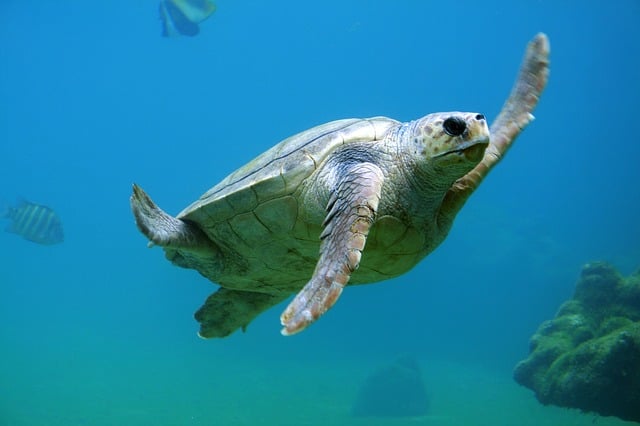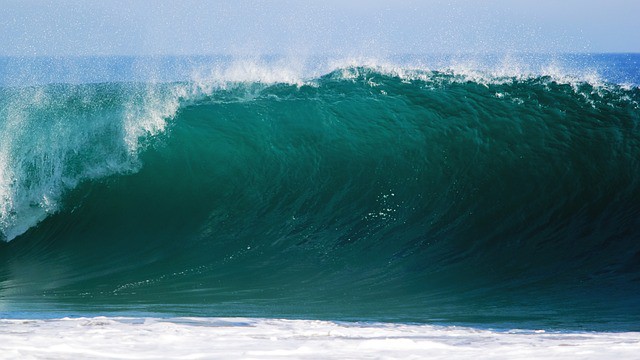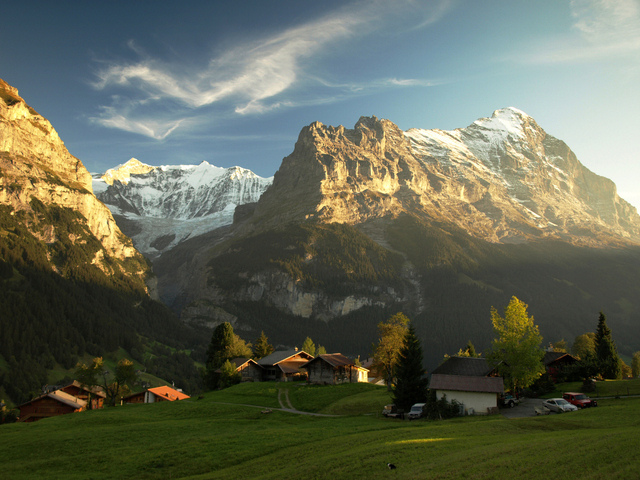Water has remained a very vital necessity for living amongst all living things including plant and animals, and about 70% of the world’s land mass is covered by surface water while underground and atmospheric water exists in almost every part of the world.
However, while underground water is used by plants and exploited by man for consumption or reservoir, surface water provides these too, supply underground water crevices and most importantly provide a habitat for many living plants and animals that are collectively referred to as aquatic life.
Aquatic life refers merely to live in surface water, and water in this instance, under this context is called a marine habitat and the living things that dwell in water, either momentarily or permanently are called aquatic plants and animals, and these constitute the life in water—aquatic life.
There are many forms of aquatic habitats, and each of them differs in size, depth, location, constituents, lifespan and the life they support. We are conversant with words such as water log, stream, rivers, oceans, freshwater, marine water, etc. All these are forms of aquatic life, and they differ from one another by different parameters.
Generally, each of these habitats consists of stones, clay, silt, sand, and some form of aquatic life, which may be some or all of plants, new types of insects, diverse kinds of fish, amphibians, reptiles, birds, and mammals.
These living things are living because of the presence of these water bodies (aquatic habitats) and any distortion in the physical or chemical state of these water bodies grossly affect these living things most often in a negative way and these distortions irrespective of its cause or where it is found, is referred to as water pollution.
Water pollution is therefore defined as the distortion of the physical and chemical balance of water bodies due to any type of contamination most often due to the activities of humans. Water pollution includes the corruption of any water irrespective of where they are found.
However, in this context, water pollution is thus defined as the contamination and distortion of the natural and balanced state of an aquatic habitat which has many effects on the aquatic life that dwells in these habitats.
Water pollution could result from agricultural chemicals and waste run-offs, sewage, and wastewater from domestic activities, oil spills, industrial effluents, waste, and radioactive substances and refuse or substantial waste deposits.
Effects of Water Pollution on Aquatic Life
Aquatic life refers to the presence of both plants and animals in the water, although animals take the preponderance in this context due to their abundance and gigantic ratio when compared to the plants that live in water.
When water is polluted from any of the sources as mentioned earlier, the polluted water distorts the ecological balance of the aquatic animals and this result in numerous negative adverse effects. Some of these effects include.
- Chemical Poisoning
When water is polluted from any of the sources as mentioned earlier, the polluted water distorts the ecological balance of the aquatic animals and this result in numerous negative adverse effects. In addition to these, they also have direct contact with the water at all times.
When water is polluted from chemical sources such as agricultural run-offs or industrial waste disposal, many of these aquatic animals are exposed to heavy metals such as lead and other harmful chemicals which most often results to immediate deaths of smaller animals, larvae of insects and eggs.
This chemical poisoning affects the breeding cycles of these animals, and some of them remain as deposits in these animals which make them unsafe sources of food for larger aquatic animals and even humans.
- Oxygen Depletion
Water pollutants such as organic matter and nutrients such as fertilizers that are biodegradable facilitate an increase in the growth of aerobic algae—a phenomenon that is called eutrophication, which consumes a large portion of dissolved oxygen which is a respiratory element for these, aquatic lives.
Furthermore, some other chemicals that readily undergo oxidation utilize oxygen, and this also results in the depletion of dissolved oxygen in the water.
Oxygen depletion affects aquatic ventilation which leads to suffocation and unrest amongst these aquatic lives. In some cases, smaller animals die off immediately. Besides, the reduction of dissolved oxygen increases dissolves carbon dioxide which also affects aquatic plants.
- Starvation and Scarcity
One notable effect of water pollution is depopulation. Water pollution results in the death of smaller fishes, mollusks, bugs, insects and their larvae; these are the integral component of the food chain of the aquatic habitat. The destruction and depopulation of these creatures unbalance the ecosystem resulting in scarcity, competition, and starvation.
Furthermore, water pollution initiates the migration of many aquatic animals from a particular place to another, and some of these migrants are food sources for other animals which may be insensitive to the pollutants due to the threshold or constituents and these results in starvation.
- Infection and Diseases
Aquatic plants and animals are living things and are also susceptible to infections and diseases. Water pollution when they result from pollutants such as wastewater and sewage waste most often results in the infestation of water bodies by microbial population.
Unlike commercial fish ponds where fishes are protected from microbial infection by the use of precise antimicrobial agents, water bodies such as the rivers and seas are vulnerable, and when they are polluted with these microbes, the aquatic lives are infected, and they become diseased.
Many of them are lost due to the disease conditions while others have their life output such as breeding and reproduction grossly affected.
- Loss of Aquatic Vegetation
Aquatic vegetation includes aquatic plants. These plants serve as food sources for many aquatic animals as well as agents for regulating the aquatic ventilation because they also utilize carbon dioxide for photosynthesis and at the same time give out oxygen.
Thus, they are food sources, and yet they increase the tension of dissolved oxygen.
Water pollution such as sewage and wastewater pollution may result in the microbial infection and disease of these plants resulting in their death while contaminations from solid waste such as plastic may block sunlight from reaching them which are an essential factor for photosynthesis.
Thus, the loss of this vegetation causes respiratory imbalance and starvation for most aquatic lives, especially animals.
- Change in Water Hydrogen and Ionic Concentration
The pH of water is determined by the concentration of the hydrogen ion in the water. Water bodies which have high pH are called saltwater or marine water as found in most oceans while others which have moderate pH are most often called freshwater.
These different kinds of water can only accommodate some species of aquatic lives. There are species of aquatic lives that could easily survive in freshwater but rarely will they do so in salt or marine water.
Because hydrogen ion concentration could be easily altered by subtle chemical changes in water, chemical pollutants especially from industrial waste most often adjust the water pH and thus makes a water body that was once fit for habitation for some species unfit for them.
Some of these animals and plants have unique mechanisms of adapting to this change in the meantime. However, others who can’t adapt quickly die off or migrate away who leads to scarcity, starvation, loss of biodiversity and even extinction of these species.
- Turbidity
This most often results from substantial waste pollution such as plastic, polythene and refuse. Their presence results in the cloudiness and turbidity of the water bodies where they are found.
These plastics are non-biodegradable and most often affects these aquatic lives by preventing the dissolution of atmospheric oxygen into the water for respiration and sunlight for photosynthesis.
Therefore, lack of sufficient oxygen coupled with eutrophication in some cases results to aquatic hypoxia which leads to the death of some species while the absence of sunlight and photosynthesis leads to the unproductively of these plants (called phytoplankton) which also serve as food sources for other animals.
Furthermore, because they are non-biodegradable, they stay for a longer time in water and thus trap some of these animals and cause them to die of suffocation and in other times they catch the eggs, larvae, and fingerlings of some of these animals resulting in poor breeding yield and even death.
- Degradation and Total Loss of Habitat
Although it is rare to see an ocean or a sea like the Pacific being thrown out entirely as a habitat for aquatic life due to water pollution, other micro-habitat like water logs and ponds could be entirely lost as a habitat due to water pollution.
These smaller water bodies could be grossly polluted to the extent that all the existing animals in the water bodies die away, and the water body remains inhabitable for even immigrants. Water pollution due to oil spillage and solid wastes like plastic are notorious for the total loss of an entire habitat in most climes.
In addition to this, bigger water bodies most often experience degradation than a total loss. The water bodies are still habitable but only to some species or kinds of aquatic life that generally exist in them before. Others have either died off or have migrated due to many other factors that were induced by water pollution.
-
Depletion of Biodiversity and Extinction
All the effects of water pollution that have been listed above ultimately result in the loss of biodiversity and extinction. Water pollution results in the subtle death of many species through direct effects like water poisoning and pH change or through immigration. A continuous decline in biodiversity eventually results in the extinction of a whole species of aquatic life.
Water is the most versatile solvent on earth. Thus, it can easily integrate anything that is exposed to it into its overall constituents. Therefore, water does not disintegrate or destroy waste; instead, it accommodates them. Hence, pollution of water bodies and aquatic habitats by any pollutant will remain and adversely affects these marine lives.
In addition to this, water pollution most often results in chemical reactions and thus it is not quickly addressed by mechanical means. So, water pollution should be avoided if the effects above would be solved because sometimes these effects become irreversible.
Conclusion
All over the globe, water pollution has posed the greatest danger to aquatic life, and its effect that has been succinctly discussed above is irreversible and profoundly adverse in most cases. Modern civilization has been accompanied by a surge in industrialization and urbanization. Industries and human settlements continue to increase, and this has led them close to water bodies.
As a result of this, many water bodies have become vulnerable to contamination from industrial chemical waste, wastewater, and sewage waste.
In addition to this, increased deforestation and urbanization have continued to push grazing and farming lands close to many water bodies, and these agricultural activities also contribute to the pollution of water bodies from fertilizers run-offs and grazing animal sewage.
Water pollution occurs as a result of human activities. Thus, humans are responsible for the menace of water pollution, and only humans can put an end to the effects of water pollution on aquatic life and this is only possible when we consider these aquatic lives in carrying out our activities and employed alternative means of waste management other the random indirect or direct disposal into water bodies.
It is important to note that the effects of water pollution also affect us in various ways. Polluted water is harmful to our health on consumption, and dirty water contaminates aquatic life which serves as a great food resource for both terrestrial animals and humans.
Polluted water is harmful to our health on consumption, and contaminated water contaminates aquatic life which serves as a great food resource for both terrestrial animals and humans.
Also, migration, depopulation, and extinction of these aquatic lives also threaten our food security.
Therefore, it is imperative that we preserve our own lives and the lives of these water creatures by regulating our activities in such a way that water pollution ultimately minimized or totally eradicated.




